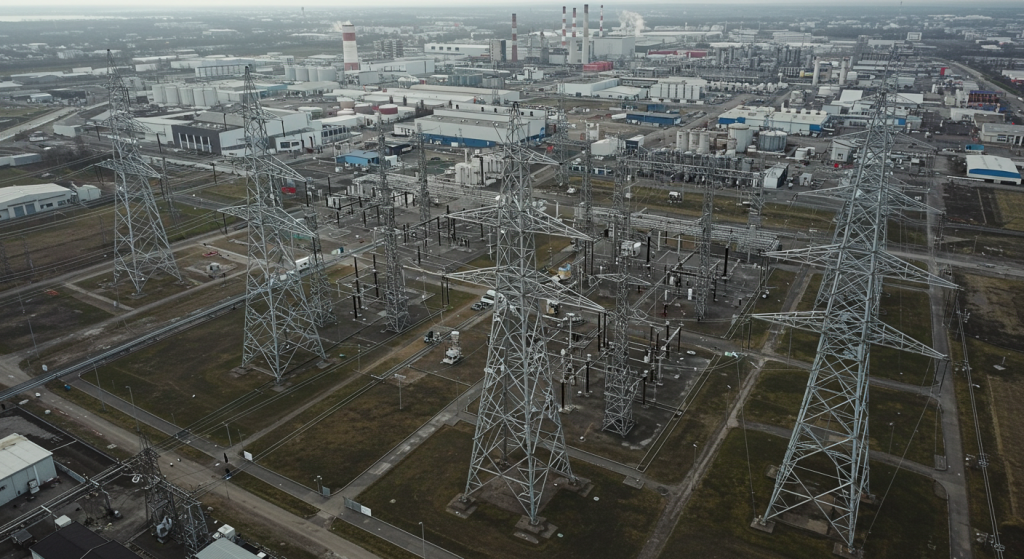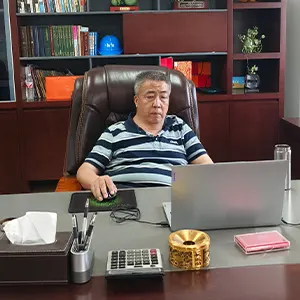Industrial Power Towers: Understanding Their Vital Role and Uses
2025-04-28
What are Industrial Power Towers?
- Industrial Power Towers are the commonly used term for Electric Pylons or power towers. They are critical structures for a nation’s energy infrastructure. These towers facilitate the efficient transfer of electricity starting from power stations to substations and finally to the end users.
- They aid in the smooth and sequential flow of power distribution on a national grid power system. It is essential to study these power towers concerning their classification, components, structural design, and practices of upkeep relevant to ensuring a dependable and safe power supply.
Industrial Power Towers: Key to Efficient Power Transmission
The exact term for Industrial Power Towers System is 10kV power tower/11kV power tower. This industrial power tower's simple frameworks serve to maintain the electrical transmission and distribution network. These Pylons are very important components of the overhead power distribution system that interlink the distribution stations as well as substations and finally serve to deliver the terminal value of electric services for consumers.
What are the Features of 10kV and 11kV Transmission Towers?
10kV and 11kV transmission towers are purpose-built to endure the active engagement of medium-voltage electricity. They find application in supporting power cables meant to transmit electricity at voltages of 10,000 or 11,000 volts. They are critical to the power distribution systems, electricity should flow freely in a guaranteed, reliable manner. These 10kV and 11kV transmission towers are erected throughout urban settings as well as rural and industrial zones, stretching the capability to carry power over Great Distances.
Use Cases of 10kV and 11kV Industrial Power Towers
These towers have a wide range of applications across various fields for the reliable and steady transmission of power:
1. Industrial Area Power Transmission
The transmission tower of 10kV tier is that also serves industrial parks and big factories, catering to their enormous consumption of power. These towers are instrumental in providing an adequate power supply to aggressive electric machines and production lines in industrial zones.
2. Urban Power Distribution
These towers are also employed in urban areas for effective electricity distribution across different residential and commercial zones for uninterrupted power supply during routine activities.
3. Rural Electrification
In less developed rural regions, these towers are extremely useful in extending the power supply infrastructure to more remote areas.
Quality Assurance and Reliability of Industrial Power Towers
The design and manufacture of Industrial Power Towers are done in compliance with the domestic and international standards of the power sector. We also subject its towers to stringent quality assessment procedures to determine the reliability, structural integrity, and safety of the product throughout its life cycle. The power tower's ability to resist various environmental challenges is tested, including extreme weather and fluctuations in temperature, while ensuring the safety and stability of the power grid.

XY Tower Power Towers’ Durability and Performance
- We utilize precision, reliability, and attention to detail while manufacturing 10kV and 11kV transmission line towers, ensuring that the towers have a good durability grade.
- All our towers are constructed from high-grade materials, which enhances their performance. The towers are engineered to be simple to install and to withstand harsh weather conditions, making them suitable for both rural and urban areas.
- In addition, we promise the timely shipment of all our products as well as affordable prices, which guarantees that your power infrastructure projects will not be delayed.
Materials Used in Construction
The selection of materials plays a substantial role in the construction and operation of the power towers since they dictate how well a power tower performs, how long its lifespan is, and how frequently it will need maintenance. The main materials used include:
• Steel:
One of the most flexible and strongest materials in the industry, which makes it suitable for use in lattice towers. Moreover, the galvanized form of the steel is more resistant to corrosion, increasing the durability of the tower. Financial Times
• Concrete:
It is a solid and reliable material that is used in solid towers. It is particularly ideal for withstanding harsh environmental conditions. Reinforced concrete also works well under tensile stresses.
• Aluminum:
A non-corrosive element that is both lightweight and strong makes aluminum ideal for power towers in some of the components. Unfortunately, its lower tensile strength limits its application in straining heavy loads.
Construction and Installation
Power tower construction is a sequential set of interlinked activities that are based on a controlled schedule and are intended to result in the creation of the structure:
1. Organize the site: Clear ground, undertake geological expeditions, and put up access roads.
2. Foundation Work: Depending on the type of tower and soil conditions, foundations could be concrete pads, drilled shafts, or piles type. Proper grounding is always important for safety as well as equipment protection.
3. Structural Assembly: The components are preassembled off-site, then transported to the location for assembly. Heavy machinery like cranes erect the tower, which has to be aligned and locked into place precisely.
4. Electrical Integration: After the tower is erected, the transmission lines are set, and the electrical connections are made, which includes stringing the lines with the correct amount of force and space.
Buying Guide for Industrial Power Towers
An incorrect decision when purchasing industrial towers might affect their performance over time, posing a safety risk. The towers are used to hold high-voltage lines, therefore critical for power transmission through the electrical grid. Consider these points before purchasing:
1. Determine Voltage Requirements
Establish the maximum voltage capacity required, be it high voltage, extra-high voltage (EHV), or ultra-high voltage (UHV). This will determine the size, height, and type of tower needed.
2. Select the Appropriate Tower Type
Consider whether your application requires steel lattice towers, tubular steel poles, or concrete power towers. Lattice towers are optimal for harsh rocky landscapes, while tubular poles suit urban areas.
3. Materials and Endurance
Check the use of materials such as galvanized steel and reinforced concrete, paying particular attention to rust-resistant coatings for coastal and damp places.
4. Compliance and Certification Approval
Check the towers for local and global compliances such as IEC or ANSI standards, and make sure they fulfill the requirements of the structural and load tests.
5. Supplier Trustworthiness
Work with reliable suppliers like XY Tower for their reputation, custom tower designs, and warranty services.
Conclusion
XY Tower is designed for durability, precision, and reliability. These towers are manufactured using high-quality materials, and they ensure superior structural stability, resistance to harsh environments, and easy installation. With competitive pricing and timely delivery, our industrial power towers offer unparalleled performance for efficient power transmission.

Hey, I’m Chunjian Shu
"X.Y. Tower: Reliable, innovative solutions for high-quality towers and electrical equipment with professional service.
